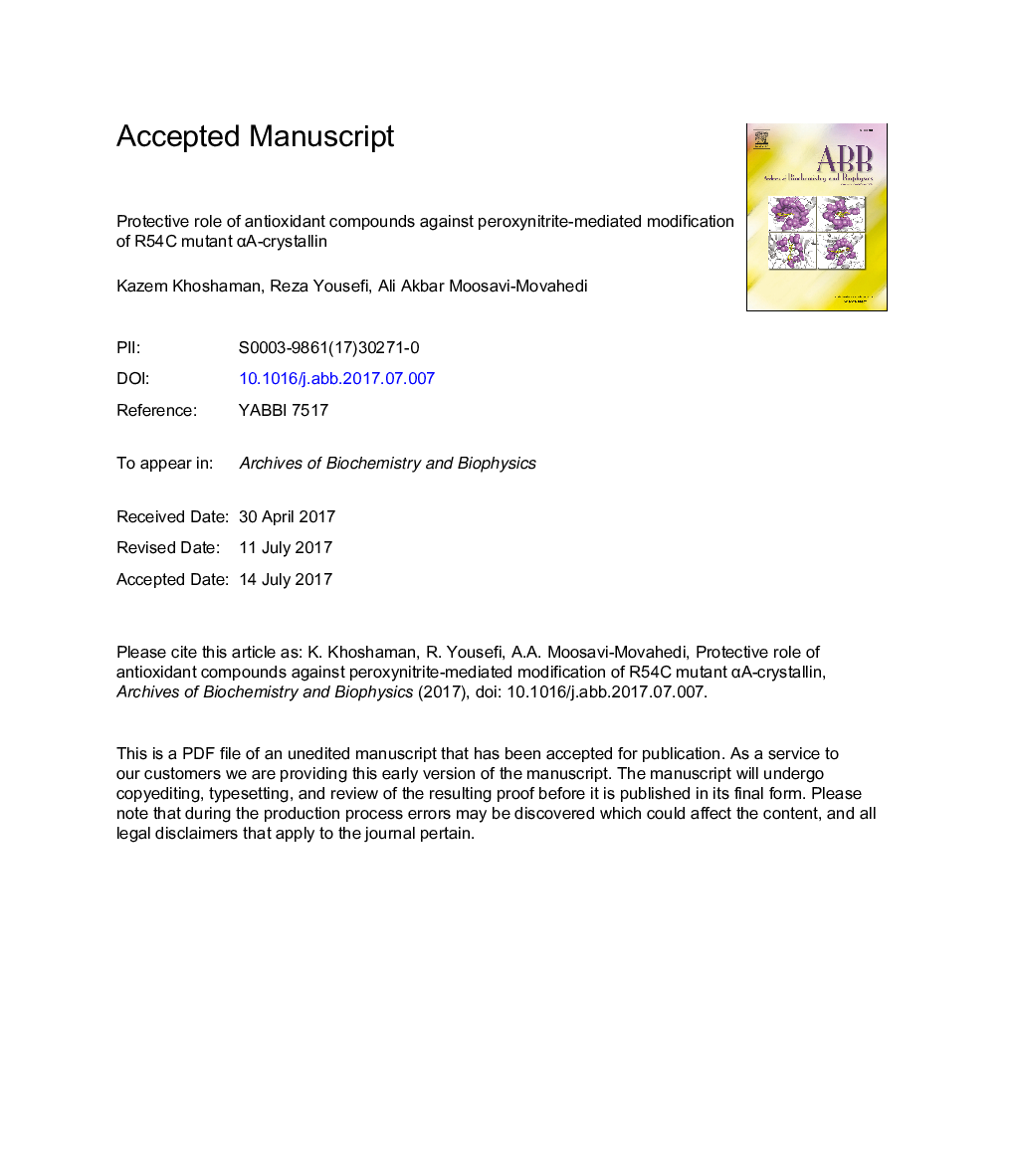| Article ID | Journal | Published Year | Pages | File Type |
|---|---|---|---|---|
| 5504347 | Archives of Biochemistry and Biophysics | 2017 | 43 Pages |
Abstract
As a highly potent reactive oxygen and nitrogen species, peroxynitrite (PON) has endogenous production in the eye ball and contributes to a variety of ocular disorders. In the current study the structural characteristics, chaperone-like activity and conformational stability of R54C mutant αA-crystallin (αA-Cry) were studied upon modification with PON and in the presence of three antioxidant compounds such as ascorbic acid (ASA), glutathione (GSH) and N-acetylcysteine (NAC) using gel electrophoresis and different spectroscopy methods. The results of both fluorescence analysis and gel electrophoresis suggested that PON modification leads to dityrosine-mediated intermolecular cross-linking of this cataractogenic mutant protein. Also, the propensity of R54C mutant αA-Cry for disulfide cross-linking was increased upon PON modification. In addition, the PON-modified protein indicated structural alteration, reduced chemical stability and different pattern of proteolysis. Upon modification with PON, mutant αA-Cry displayed a significant increase in the chaperone-like activity against aggregation of γ-crystallin and insulin. In addition, different antioxidant compounds indicated a prominent role in neutralizing the PON damaging effects on structural integrity and stability of this protein. The results of this study may highlight the importance of antioxidant-rich foods or potent antioxidant supplements in protection of lens crystallins against PON-mediated structural damages and cataract development.
Related Topics
Life Sciences
Biochemistry, Genetics and Molecular Biology
Biochemistry
Authors
Kazem Khoshaman, Reza Yousefi, Ali Akbar Moosavi-Movahedi,
